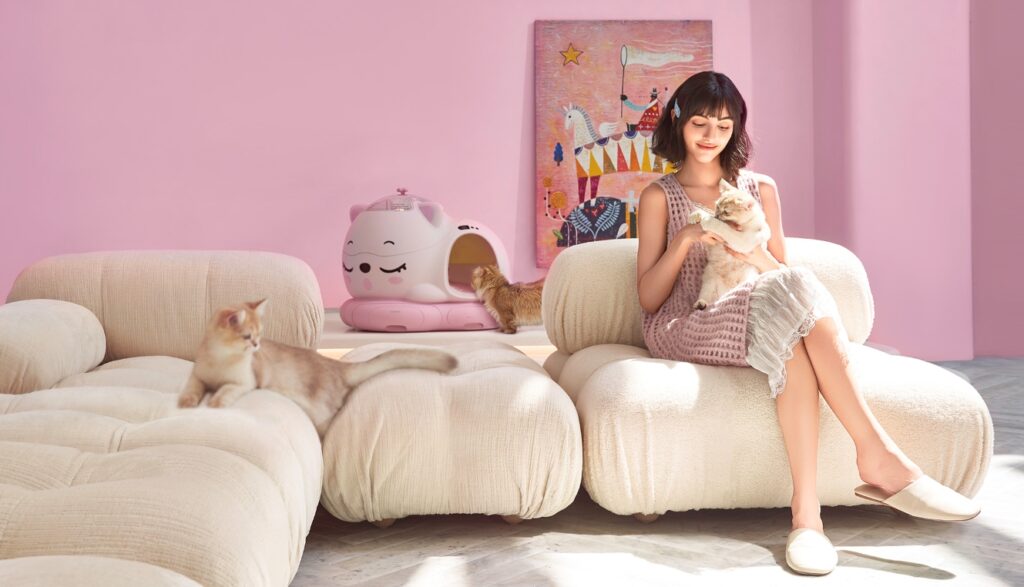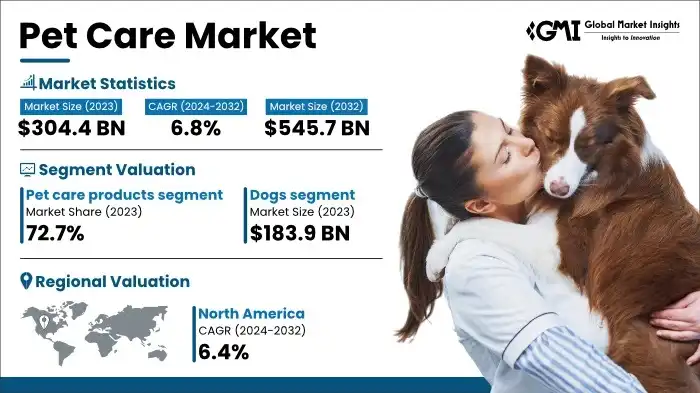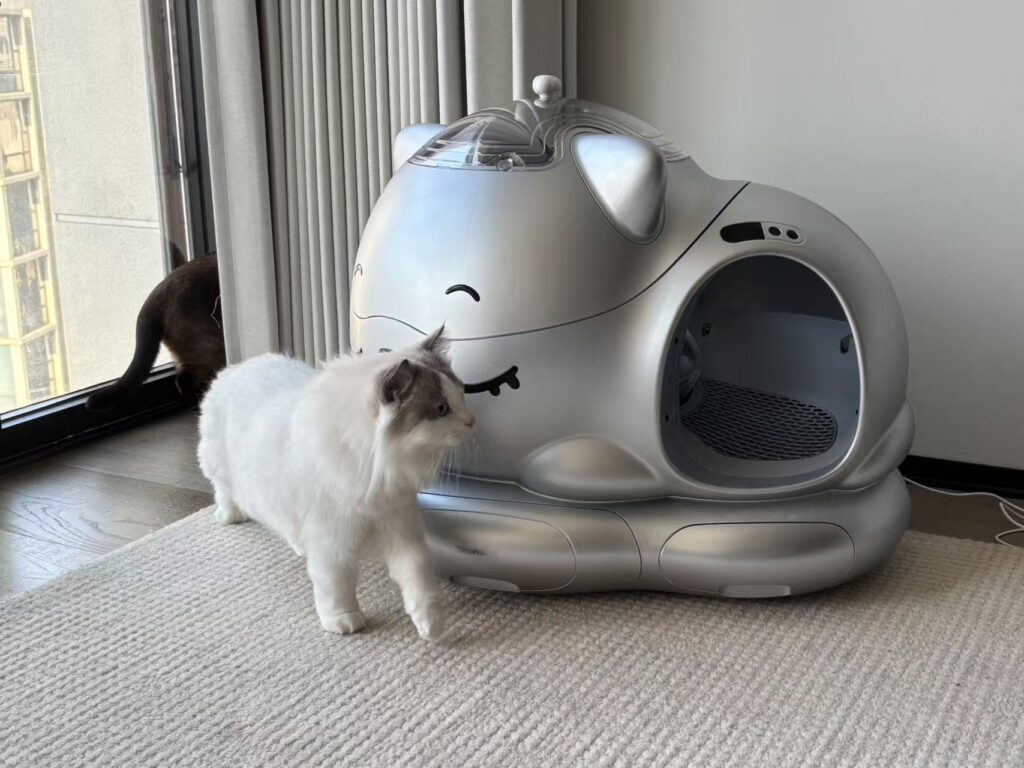1. Introduction to the Cat Automatic Self-Clean Litter Box Market
The cat automatic self-clean litter box market is booming. Why? Because people love their cats but hate the mess that comes with them. In today’s fast-paced world, pet owners are looking for smarter, more convenient ways to care for their furry friends. Distributors, if you’re not already on board with this trend, it’s time to catch up. Let’s dive into the reasons behind this market’s explosive growth.

1.1 Overview of the Growing Demand for Smart Pet Care Products
Trends in Increasing Pet Ownership Worldwide
Pet ownership has been climbing globally. A 2022 study by the American Pet Products Association (APPA) found that 70% of U.S. households own at least one pet, with cats accounting for 45.3 million homes. Source: APPA. Similar trends are observed in Europe and Asia, fueled by urbanization and pet humanization.

The Role of Technology in Revolutionizing Pet Care
Technology is reshaping pet care—from smart collars to automated feeders. Cat litter boxes haven’t been left behind. Features like app connectivity and AI-based waste analysis have transformed these once-basic necessities into sophisticated gadgets.
Growing Consumer Demand for Convenience and Automation
The rise of dual-income households and work-from-home lifestyles has increased the demand for automated solutions. Time-strapped cat parents value products that make their lives easier without compromising their pet’s well-being.
1.2 Key Drivers Behind the Popularity of Cat Automatic Self-Clean Litter Boxes
1.2.1 Convenience
- Reduced Cleaning Effort for Busy Cat Owners: These litter boxes do the dirty work, literally. With automated cleaning cycles, owners don’t have to scoop daily.
- Benefits for Homes with Multiple Pets: Multi-cat households benefit significantly, as these boxes manage higher volumes of waste without constant maintenance.
1.2.2 Hygiene
- Enhanced Cleanliness Compared to Traditional Litter Boxes: Automated systems keep the litter clean and fresh, reducing the spread of bacteria.
- Importance of Maintaining Odor-Free Environments: No one likes walking into a house that smells like a litter box. Advanced odor control features address this issue effectively.
1.2.3 Health Monitoring
- Early Detection of Cat Health Issues Through Waste Analysis: Some models analyze waste patterns, alerting owners to potential health concerns like urinary tract infections.
- Integration with Health Tracking Systems for Pets: These insights can be shared with vets for better health management.
1.2.4 Modern Lifestyles
- Compatibility with Smart Homes: Many products integrate seamlessly with smart home ecosystems like Alexa or Google Home.
- Eco-Conscious Designs for Sustainability-Driven Buyers: Recyclable materials and energy-efficient designs attract environmentally-conscious consumers.

2. Advanced Features Driving Consumer Interest
2.1 Self-Cleaning Mechanisms
Comparison of Raking vs. Sifting Mechanisms
| Feature | Raking Mechanisms | Sifting Mechanisms |
| Operation | Uses a rake to remove waste. | Sifts litter to separate waste. |
| Efficiency | Effective for moderate use. | Ideal for multi-cat households. |
| Maintenance | Requires occasional cleaning. | Easy to clean and maintain. |
How Self-Cleaning Reduces Manual Labor
Imagine a machine cleaning up after your cat. Sounds dreamy, right? Self-cleaning litter boxes save hours of effort and keep homes cleaner.
Tips for Maintenance and Extending Product Lifespan
- Clean sensors regularly to avoid malfunctions.
- Use recommended litter types to ensure optimal performance.
- Schedule periodic deep cleanings.
2.2 Health Monitoring Capabilities
Data Collected: Waste Consistency, Urination Patterns, etc.
Modern litter boxes collect valuable data on waste volume and frequency, which can indicate early signs of illness.
Benefits for Proactive Health Management
With real-time health insights, owners can address potential issues before they escalate. This feature is especially beneficial for older cats.
Connection with Mobile Apps for Health Insights
Apps provide a user-friendly interface to monitor your cat’s health data. Notifications and recommendations keep owners informed and proactive.
2.3 Eco-Friendly Features
Biodegradable Litter Options and Energy-Efficient Designs
Eco-friendly features, such as biodegradable litter and low-energy consumption, resonate with green-conscious buyers.
Strategies for Minimizing Environmental Impact
Distributors can highlight brands using recycled materials or energy-efficient production methods.
Benefits of Sustainable Manufacturing for Distributors
Partnering with eco-conscious manufacturers enhances brand reputation and attracts environmentally-aware consumers.
2.4 Odor Control Technology
Multi-Layer Odor Filtration Systems Explained
These systems combine activated charcoal, HEPA filters, and UV sterilization to neutralize odors.
Role of Activated Charcoal and UV Sterilization
Activated charcoal absorbs smells, while UV sterilization kills bacteria and germs.
Importance for Multi-Cat Households
Odor control becomes a priority when managing multiple cats. Advanced systems ensure the home stays fresh and inviting.
3. The Role of Technology in Cat Automatic Self-Clean Litter Boxes
Technology isn’t just for humans anymore; our furry companions are benefiting too! Smart litter boxes have transformed from simple gadgets to high-tech marvels. Let’s dive into the game-changing innovations driving this industry.
3.1 Integration with Mobile Apps
These days, there’s an app for everything—including your cat’s litter box. Mobile apps are bridging the gap between convenience and proactive pet care.

- Notifications for Cleaning and Usage Tracking: Imagine getting a friendly reminder: “Time to empty the waste compartment!” Apps ensure cat owners stay on top of cleaning schedules, so the box is always fresh.
- Customizing Settings Remotely: Some apps allow users to tweak cleaning cycles or adjust odor management settings right from their phones. Perfect for pet parents on the go.
- User Feedback Shaping App Functionality: App developers frequently incorporate user suggestions to enhance features. For instance, integrating multi-cat tracking for households with more than one feline friend.
Did You Know? According to a 2023 survey, 68% of smart litter box users reported improved satisfaction when using app-enabled devices.
3.2 AI-Based Waste Analysis
Artificial intelligence isn’t just a buzzword—it’s helping to keep our pets healthy.
- How AI Identifies Patterns and Detects Potential Health Risks: Smart litter boxes can analyze waste for abnormalities like unusual urination frequency or stool consistency, which might signal underlying health issues.
- Case Studies on Early Illness Detection: In one study, AI-based litter boxes alerted a pet parent to a urinary tract infection early, preventing costly vet bills and discomfort for the cat.
- Benefits for Pet Owners and Veterinarians: These insights empower cat owners to seek timely medical care and give vets valuable data for accurate diagnoses.
3.3 IoT-Enabled Litter Boxes
The Internet of Things (IoT) connects devices in ways that once felt like science fiction.
- Integration with Smart Home Systems: Many litter boxes now sync with Alexa, Google Assistant, or other smart home hubs, enabling hands-free control and notifications.
- Ensuring Data Security: With tech-savvy buyers concerned about privacy, manufacturers are prioritizing secure data storage and encryption.
- Opportunities for Distributors: Highlighting these high-tech features can help distributors tap into tech-loving demographics.
4. Consumer Preferences Shaping Product Design
Today’s consumers want products that are as stylish and functional as they are practical. Distributors must understand these evolving preferences to stay competitive.
4.1 Compact Designs for Small Living Spaces
Not everyone has a sprawling home, and cat owners in urban areas need solutions that fit their lifestyle.
- Demand for Space-Saving and Portable Models: Compact litter boxes are a must for city dwellers and apartment renters.
- Stylish Designs to Match Modern Interiors: Sleek, minimalist designs are winning over buyers who value aesthetics as much as functionality.
- Feedback on Compactness from Urban Customers: Many reviews highlight the importance of portability and how it makes cleaning less daunting.
4.2 Silent Operation for Noise-Sensitive Households
Noise can be a dealbreaker for both cats and their owners.
- Noise-Reduction Technology in Motors: Advanced motor designs minimize sound during cleaning cycles, keeping households peaceful.
- Importance of Quiet Operation for Nervous Cats: Some cats are skittish around loud appliances, making silent operation a top priority.
- Consumer Reviews Emphasizing Silent Features: “I can’t even tell when it’s running—it’s that quiet!” says one reviewer of a top-selling model.
4.3 Customizable Settings
Every cat is unique, and litter boxes need to adapt accordingly.
- Adjustable Cleaning Cycles for Varying Cat Habits: Whether it’s frequent cleaning for a busy cat or occasional cycles for a single-pet household, customization matters.
- Odor Management Options: From activated charcoal to UV sterilization, customizable features ensure an odor-free environment.
- Safety Features for Homes with Children or Multiple Pets: Smart sensors prevent accidents by halting cleaning cycles when movement is detected.
Personal Note: I once visited a friend with a smart litter box, and her toddler was fascinated. Thanks to built-in safety features, it was a worry-free experience.
5. Regional Trends in the Cat Automatic Self-Clean Litter Box Market
5.1 Regional Consumer Preferences
Let’s take a quick world tour to see how preferences differ across regions. Spoiler alert: cats rule everywhere, but their humans have some unique priorities.

North America
In North America, consumers are all about high-tech and convenience. With a growing trend of smart homes, self-cleaning litter boxes with app integrations are flying off the shelves. People here also love premium features, like health monitoring and robust odor control.
Asia
Asia leans toward affordability and functionality. Designs that are compact and easy to use appeal to the region’s urban population. Distributors who cater to cost-effective, innovative products are finding major success.
Europe
In Europe, sustainability takes center stage. Consumers want eco-friendly materials, energy-efficient designs, and biodegradable litter. Green-minded buyers are willing to pay a premium for sustainable options.
Table: Regional Preferences Overview
| Region | Key Preferences | Notes |
| North America | High-tech, app integration, convenience | Smart home compatibility favored |
| Asia | Affordable, user-friendly, compact | Urban-focused designs are a hit |
| Europe | Sustainability, eco-friendly options | Buyers prioritize green products |
5.2 Emerging Markets
It’s exciting to see the boom in emerging markets like South America and Africa. Urbanization in these regions is driving demand for convenient pet care solutions, including self-cleaning litter boxes.
South America
With pet humanization on the rise, South American consumers are adopting smart litter boxes as part of a growing focus on pet wellness. It’s a market ripe with opportunity for distributors.
Africa
In Africa, affordability and durability are key. Distributors targeting this region can benefit by emphasizing reliability and cost-effectiveness.
Southeast Asia
Southeast Asia is witnessing rapid urbanization and a trend toward smaller living spaces, making compact, stylish designs a must-have.
6. Challenges Distributors Face in This Sector
6.1 Educating Retailers
Distributors wear many hats, and educator is one of them. Retailers often need a crash course in smart litter boxes to sell effectively. Providing detailed training materials and organizing product demonstrations can work wonders.
Misconceptions
One challenge is overcoming the notion that smart litter boxes are too complex or expensive. Highlighting their user-friendly designs and long-term value is key.
6.2 Managing Inventory
Balancing stock for a product category that evolves so quickly is tricky. Distributors must stay on their toes to adapt to changing consumer demands and handle returns or warranty claims smoothly.
Seasonal Demand
Cats don’t take holidays, but seasonal trends—like gift-buying seasons—affect sales. A solid inventory strategy can make or break your bottom line.
Table: Common Challenges and Solutions
| Challenge | Solution |
| Educating retailers | Training materials, demos, and guides |
| Balancing inventory | Data-driven demand forecasting |
| Handling returns/warranty | Clear policies and responsive service |
7. How Distributors Can Stay Competitive
7.1 Partnering with Reliable Manufacturers
Partnering with trustworthy manufacturers is vital for ensuring product quality and consumer satisfaction.
- Why Quality and Certifications Matter: Products with certifications like CE, RoHS, or UL demonstrate compliance with safety and quality standards, building customer trust. Reliable manufacturers often have these certifications in place.
- Case Study: A distributor partnered with a certified manufacturer who provided consistent quality. This partnership led to fewer returns and higher customer satisfaction, ultimately boosting sales.
7.2 Offering Value-Added Services
7.2.1 After-Sales Support
Providing excellent after-sales services can make all the difference.
- Offer comprehensive maintenance guides.
- Provide extended warranty options.
- Ensure quick resolution of customer complaints.
7.2.2 Retailer Training
Equip retailers with the knowledge they need to promote your products effectively.
- Distribute detailed product guides and training videos.
- Host webinars to explain product features.
- Share tips on addressing common customer queries.
7.2.3 Marketing Assistance
Collaborate with retailers on marketing initiatives.
- Run co-branded campaigns showcasing product benefits.
- Provide ready-to-use promotional materials.
- Offer discounts or incentives for top-performing retailers.
7.3 Emphasizing Unique Selling Points
- Exclusive Features: Highlight innovations like AI-based health monitoring or eco-friendly materials.
- Customer Testimonials: Showcase positive reviews to build credibility.
- Competitive Pricing: Work with manufacturers to offer attractive pricing without compromising quality.

8. The Future of Cat Automatic Self-Clean Litter Boxes
8.1 Upcoming Innovations
- AI Advancements: Advanced AI can detect stress or early signs of illness in cats by analyzing waste patterns.
- Nanotechnology in Odor Control: Upcoming models may incorporate nanotechnology to neutralize odors more effectively.
- Subscription-Based Services: Regular delivery of litter refills and maintenance supplies adds convenience for consumers.
8.2 Veterinary Telehealth Integration
- Health Data Sharing: Apps connected to smart litter boxes can share data with veterinarians, enabling remote consultations.
- Support for Underserved Areas: Telehealth can provide valuable services to pet owners in rural areas.
- Remote Recommendations: Vets can offer treatment plans based on real-time data from the litter box.
8.3 Market Evolution in the Next Decade
| Aspect | 2024 Projections | 2034 Projections |
| Market Size | $1.2 Billion | $4.5 Billion |
| Key Features | AI Integration, Eco-Friendly Materials | Advanced Robotics, Full IoT Compatibility |
| Regulatory Standards | Focus on Safety and Eco-Friendliness | Comprehensive Global Regulations |
9. Sustainability and Smart Litter Boxes
9.1 Materials and Manufacturing
- Recycled and Biodegradable Materials: Manufacturers are increasingly using eco-friendly materials to meet consumer demands.
- Low-Carbon Practices: Examples include energy-efficient factories and reduced packaging waste.
- Case Study: A company adopting biodegradable plastics saw a 20% increase in sales among eco-conscious buyers.
9.2 Sustainable Waste Management
- Efficient Waste Systems: Some smart litter boxes offer automatic waste segregation and disposal.
- Eco-Friendly Litter Options: Promote biodegradable or reusable litter.
- Recycling Partnerships: Collaborate with local recycling programs to enhance sustainability.
9.3 Energy Efficiency
- Energy Consumption Comparisons: Modern models consume less power, making them cost-effective.
- Renewable Energy Integrations: Solar-powered litter boxes are a potential game-changer.
- Consumer Perception: Studies show 65% of buyers prefer energy-efficient appliances.
10. Marketing Smart Litter Boxes to Different Demographics
10.1 Millennials and Gen Z
- Tech-Savvy Designs: Emphasize app integrations and automation features.
- Social Media Marketing: Collaborate with influencers to reach younger audiences.
- Urban Appeal: Highlight compact designs ideal for city living.
10.2 Baby Boomers and Seniors
- Health Monitoring: Focus on features that track a pet’s health.
- User-Friendly Interfaces: Simplicity in design appeals to older generations.
- Dedicated Support: Provide easy access to customer service and tutorials.
10.3 Families with Children
- Safety First: Promote non-toxic materials and child-safe designs.
- Time-Saving Features: Stress how automation frees up time for busy parents.
- Interactive Elements: Some designs encourage kids to participate in pet care.

Conclusion
Staying ahead in the cat automatic self-clean litter box market requires understanding emerging trends, prioritizing sustainability, and tailoring marketing strategies to diverse demographics. Distributors who align with these trends can expect not only growth but also stronger relationships with their customers and partners.









2 Responses
Your ability to blend thought-provoking ideas with evocative language is truly remarkable. Every sentence seems to unlock a new door to understanding, leading the reader to a richer, fuller interpretation of the world around them. It’s rare to come across writing that does more than just tell a story — your words create entire worlds, and I found myself lost in them, not wanting to leave.
We are glad you like this post! Thank you!